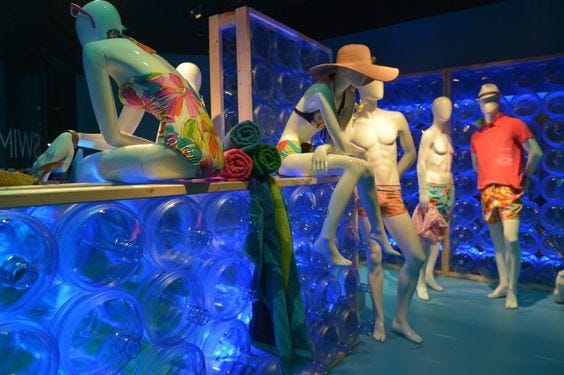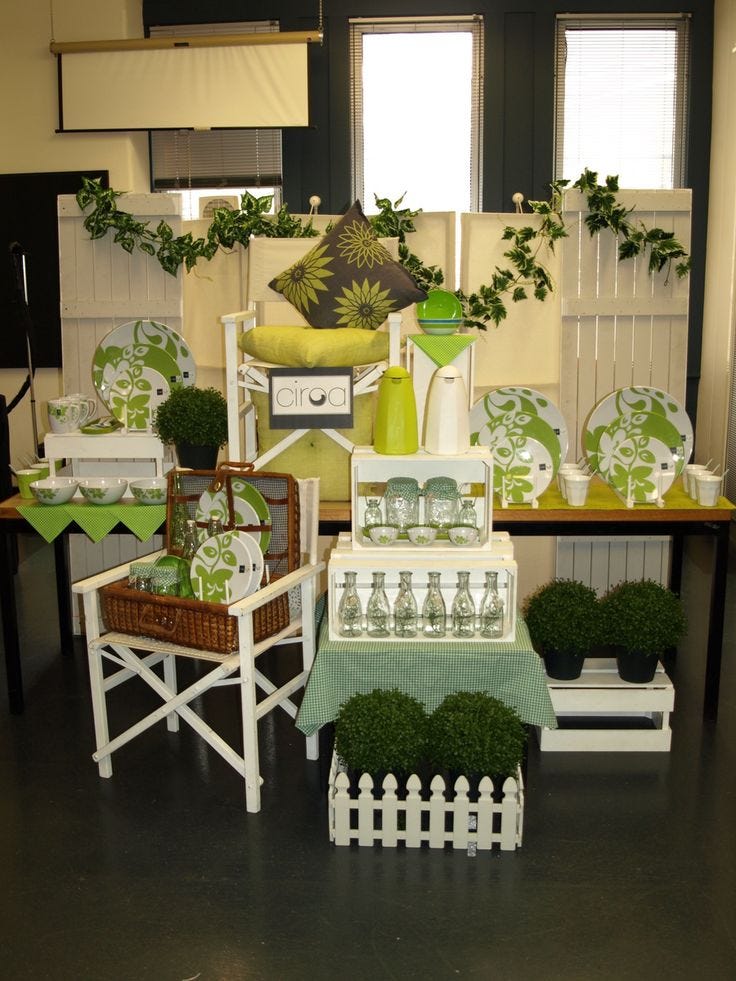The Power of Effective Visual Merchandising
"Retail is Detail" and this absolutely includes how you display your products.
Are you ready to read about how to grow your sales by displaying your products using certain proven techniques? I bet you are!
Before we jump in, take a peek at this quick expert from a Harvard Business Review article. It struck me primarily because of the ongoing challenge many businesses have in attracting and retaining quality employees. It also helps confirm tactics I have written about before regarding building relationships with your team members. Enjoy!
“What good can come from employees spending valuable work time chatting about a major sporting event or blockbuster film?
Plenty, says Ron Friedman, author of this Harvard Business Review article on the five things that high-performing teams do differently. Friedman points out that the best teams spend 25 percent more time discussing non-work matters with their colleagues, forging deep relationships and connections—essential to succeeding as a team. Noting that the desire to feel connected to others “has always been the trickiest for organizations to cultivate,” he adds that even during the pandemic, the top teams found ways to keep social connections going. To develop and maintain a strong team, McKinsey’s Leta Applegate, who leads a high-performing legal team, recommends showing an interest in colleagues and connecting as a group and individually.”
One other quickie. Many of you know that Facebook (ummm… I mean Meta!) is opening their first physical store this week. I wanted to share a shot of their design and merchandising in case you haven’t seen it. Based on this, I’m not a fan (products and categories don’t stand out and their are essentially no selling tools to engage consumers other than one video screen). What do you think?
If you have not subscribed to All Things Retail or upgraded your subscription yet, click this button right now:
Sponsored Content
DISCLAIMER: This information is not intended as an offer to sell, or the solicitation of an offer to buy, a franchise. It is for information purposes only. This offering is made by prospectus only.
As retailers, we operate physical stores (and websites) to sell products, hopefully a lot of them, to consumers. In order to accomplish this, we must attract shoppers into the store, put them into the proper frame of mind, lead them throughout the store, present them will compelling items and groups of items, encourage impulse purchases, and keep them browsing as long as possible.
One critical, and often underutilized, element of our operation which will help achieve these expectations is visual merchandising.
Visual merchandising, as you likely know, is the practice of designing a retail space in a particular way that promotes customer engagement and drives sales. It’s all about designing your sales floor and displays in ways that make it easy for shoppers to find the merchandise they need, discover new products, and get the most from their store visit.
Every store and every product assortment is a bit different, so certain visual merchandising techniques will differ from merchant to merchant. But there are plenty of best practices which can and should be applied to most if not all retail settings.
Before we jump into specifics, let’s look at a 10,000 foot view at how you may want to approach this effort and what you want to think about.
Who is Your Target Market? The psychology of visual marketing has at its core the interests and lack thereof of your target customer. Take a moment and reevaluate who shops your store: age, income, lifestyles, etc. The more accurately you evaluate your customer base, the more success you’ll have attracting them and enticing them to buy. For example, a higher end shopper may not react as well to various “bargain bins” set up around your store as a lower income customer who is trying to stretch their dollar might.
Consider Emotion. Successful visual merchandising taps into human emotion. You have been there as have I, sometimes we are just “in the mood to shop”. The goal of our visual merchandising efforts are to create that mood. Do you display swimsuits on a plain rack or do you romance them with mannequins hanging by a pool supported with imagery of sunny, warm days and people having fun?
Interest & Emotion are Different. Good visual merchants will work hard to capitalize on their shoppers interests. Displays need to be appropriate and compelling. Boring will get you nowhere. So start with determining your customer’s interests and build off of that. Since I started an outdoor theme above, lets keep it going. Perhaps outdoor entertaining is a thing in your market. Present your products in a way that their relationship to outdoor entertaining is clear. A side benefit of this is encouraging multiple-item purchases (sell the program not the item).
Don’t Forget Imagination. If you get this visual merchandising thing right, your guests will begin imagining themselves using the products to are displaying, perhaps for the use you are suggesting. People will be more likely to purchase if you make it easy for them to see themselves using the product, even if those thoughts are highly aspirational. Fitness displays, for example, leverage imagination. almost everyone thinks they can improve their body tone, weight, or similar. Play to that imagination as you build your displays, subtlety suggesting “here’s a way to improve”.
Always Think of Your Store as a Silent Salesperson: All elements of visual merchandising have a huge influence on the way shoppers experience your stores. I would argue that visual merchandising has as much, if not more, impact on the customer experience as the people working in your stores. This may seem a bit odd at first, given how I preach about the value of strong store teams. But I have seen over and over again that when operators envision their store displays as silent salespeople, and devote the attention to them that they deserve, they see the results.
(Story continues below the ad)
Sponsored Content
Interested in Learning How You Can Own Your Own Doughnuttery?
The Doughnuttery business model offers multiple revenue streams, is very affordable, can exist in in a very small footprint and features low food costs which create high margin potential.
Click here to learn more about this exciting, new franchise offering.
DISCLAIMER: This information is not intended as an offer to sell, or the solicitation of an offer to buy, a franchise. It is for information purposes only. This offering is made by prospectus only.
Tactically, here is a great overview from Repsly as to how to approach your visual merchandising efforts.
Keep reading with a 7-day free trial
Subscribe to All Things Retail to keep reading this post and get 7 days of free access to the full post archives.












